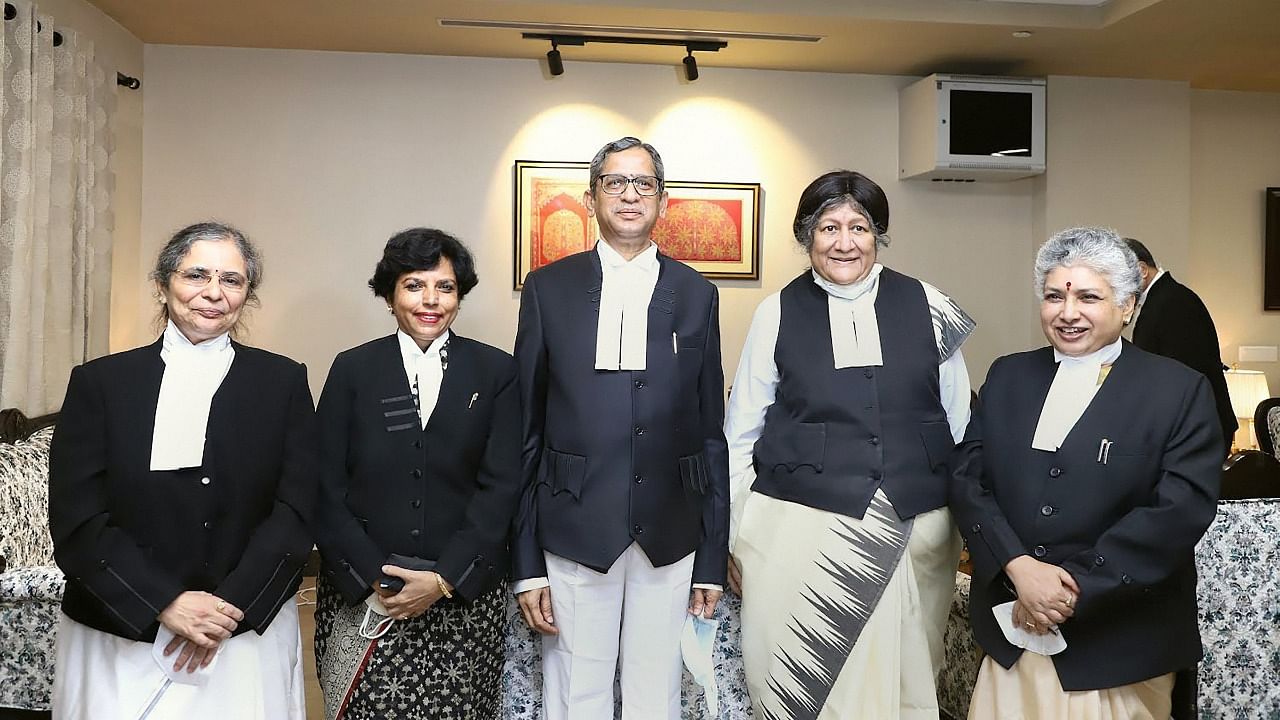
The almost “Women of the world unite. You have nothing to lose but your chains!” call by the Chief Justice of India N V Ramana has left an impression on everyone’s mind. Diversity in public institutions arguably sensitises them to the needs of diverse communities, and enhances social dialogue. Even so, any serious discussion of judicial quotas has been absent. The 1995 UN World Conference on Women drew a clear link between gender equity and democracy. It called for increasing women’s participation in both elective and non-elective offices. However, efforts in this regard were only made for legislative and party quotas for women. Before we mobilise in support of a judicial quota we need to ask whether gender quotas for judicial seats would actually help increase women’s representation.
The first adoption of such a judicial quota for women was made in Ecuador in 2005, but it did not lead to the desired outcome. Of a 31-member court that year, only two were women.
As Professor Mona Lena Krook argues, there are broadly six factors that can explain why quotas fail. Of these, the most relevant to the Indian context would be the interaction of the quota with the existing political environment. In this context, it is important to note that the women’s reservation bill, seeking to create a legislative quota for women, has not been passed for 25 years due to a lack of political consensus. Given that, the future of the success of a judicial quota for women is muddy at its best.
In India, several states have implemented quotas for women at the lower judiciary level. However, there has been no pattern of improvement in the appointments of women in the judiciary in the light of such reservation policies. States such as Kerala often record a high rate of entry of women at the lower judiciary levels, but this should not be viewed as a result of quotas. Such high rates can largely be attributed to the higher socio-economic development of women in these states.
Also Read | Shout with anger and demand 50% representation in judiciary: CJI Ramana tells women lawyers
This directs us to a more important thought — if not reservation, then what can we do to diversify the judiciary? Focusing on better tertiary education for women and sensitising young women to career options in the judicial services is the most obvious first step.
Then, there are deeper systemic changes needed. Article 217(2) of our Constitution in effect requires High Court judges to be appointed either from the bar or from the judicial services. In his research, Vidhi Centre for Legal Policy’s Alok Prasanna Kumar has pointed out that the appointment system is severely tilted in favour of selecting judges from the bar rather than the services.
Undoubtedly, the pool of applicants from the services are more diverse than those practising at the bar. Thus, the bias against judges from the services negatively impacts diversity and as a result of this, High Court judges are usually males. To solve this issue, we need a more transparent manner of appointing judges. The proposed National Judicial Appointments Commission (NJAC) would have proved to be instrumental in this regard. The introduction of clear and transparent criteria for appointing judges, a more even distribution of judges from both the bar and the services, and enhancing accountability are some alternative approaches to creating a judicial quota.
We must also try and incorporate a lesson from England in this context. It was only in 2003 that Britain got its first female judge in its highest court. To better understand the lack of diversity, the government there created an Advisory Panel on Judicial Diversity, which was to investigate the barriers to women in the judiciary and propose suitable remedies and recommendations. India, too, can look at creating such a body, and strike at the problem of low judicial representation of women at its root.
While there has been an increase in the representation of women in India’s judicial system, the pace of such change has proved to be slower than what societal progress requires. Instead of calling for a reservation policy which is set up for failure, we must pay deeper attention to such underlying factors and roots to bring about systemic changes that are bound to succeed.
(The writer is a student at NALSAR, Hyderabad)